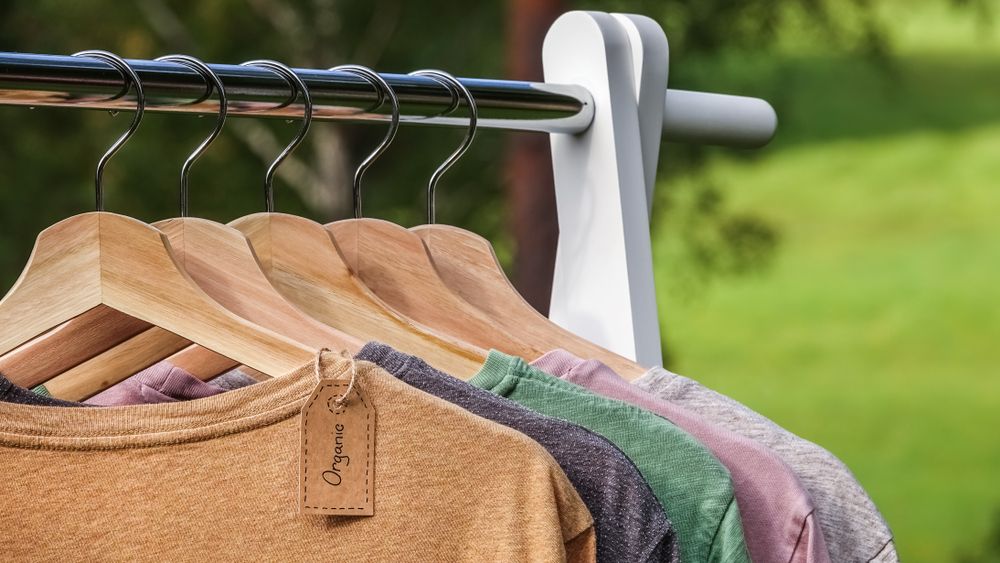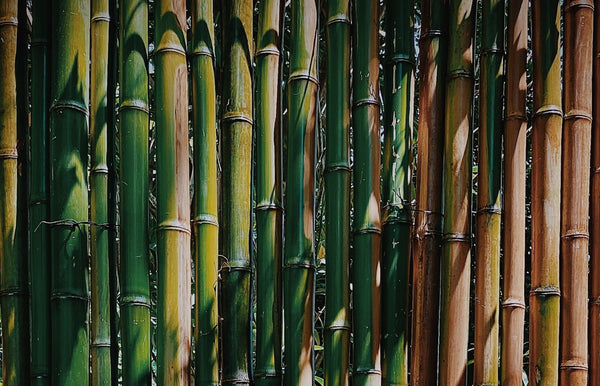Excellent Info For Choosing Bamboo Clothing
Wiki Article
What Makes Hemp Sturdy, More Durable And More Regenerative?
Hemp's inherent properties, as well as the way it's grown makes it more biodegradable, durable and sustainable than cotton. Here's why- Biodegradability-
Natural Fibers - Hemp is plant-based, natural fiber, is biodegradable. When discarded, hemp clothing and textiles break down in a natural way, returning to the soil without generating the long-lasting debris. This is in contrast to synthetic fibers like polyester, which can take hundreds of years to break down.
Hemp textiles are free of synthetic additives and chemical treatments which can slow biodegradability. However, some cotton textiles are treated with synthetic chemicals such as dyes or finishes that can hinder the biodegradation process.
Durability-
Hemp fibers can be characterized by their strength and endurance. Clothing and textiles made from hemp tend to be less likely be damaged and last longer than cotton-based products. That means hemp clothes can last longer before it begins to show indications of wear and tear.
Hemp fabrics are more resistant to pilling than cotton. This contributes to the longevity of their fabric as well as the overall quality.
Regenerative Agriculture-
Soil Health Hemp cultivation is regenerative when practiced sustainably. The deep roots of hemp help prevent erosion and soil compaction and enhance soil health by an increase in microbial activity and aeration. This aspect of regenerative will leave the soil in a better state for future crops.
Low environmental impact- Sustainable hemp cultivation techniques require the use of minimal pesticides. Contrary to traditional cotton farming, its use of synthetic chemicals can lead to soil degrading and water pollution.
Water Efficiency-
Low Water Requirements Hemp generally needs less water than cotton to development. Because of its drought resistance it can be grown with minimal or no irrigation. This makes it a more water-efficient choice, especially in areas that have limited water resources.
Hemp is an excellent crop to include in rotational systems. It can improve the health of soil as well as reduce the likelihood of disease development and soil loss. Crop rotation isn't as prevalent in the traditional cotton farming.
Hemp is a flexible material that can be used to many different products, such as building materials clothing, textiles and even paper. Its versatility lets hemp be utilized in a broad range of industries, with sustainable and regenerative techniques.
In addition to these advantages of hemp, it's also crucial to be aware that hemp and cotton can either be produced sustainably (or not) dependent on the methods of farming and processing methods. Selecting hemp products that were manufactured using environmentally friendly and ethical practices will maximize its environmental benefits. Organic cotton may also help reduce environmental issues that come with conventional production. See the most popular hemp clothing url for blog recommendations including 100 hemp t shirt, hemp long sleeve shirt, mens hemp clothing, hemp tees wholesale, nomad hemp wear, hemp textiles, patagonia island hemp pants, hemp boxer shorts, hemp underwear, 100 hemp clothing and more.

What Makes Hemp Clothing Functionally And Technicalily Superior To Traditional Fibres?
Hemp clothing is a sustainable alternative that has many practical and technical advantages over traditional fibers. Here are some ways hemp clothing is a high-performance, eco-friendly alternative.
Hemp fibres are highly breathable. They also wick away moisture, which makes hemp clothing extremely comfortable in all circumstances. They will help you stay dry and cool, and help to stop the growth of bacteria.
Temperature Regulation
Hemp clothing has excellent thermoregulatory properties. It is able to keep you warm in cool temperatures by trapping body heat in close proximity and helps to stay cool during warm conditions when moisture and heat are allowed to be released. The natural temperature regulation reduces the necessity to regularly change your clothes.
Durability and Longevity-
Hemp fibers are renowned for their the durability. Hemp clothing tends to be more durable and resistant to wear and tear compared to some traditional fibers like cotton. This makes hemp clothing will last longer, reducing the frequency of replacements and, therefore less environmental impact.
UV Protection
Hemp fibers protect the skin from UV radiation, providing natural UV protection. This can be particularly beneficial for outdoor activities and sports.
Biodegradability:
Hemp clothing is biodegradable, meaning it breaks down naturally over time when disposed of. This feature reduces textile waste's environmental burden, because synthetic fibers are not suitable for landfills to remain.
Low environmental impact
Hemp cultivation is less dependent on synthetic pesticides compared to cotton. It requires less of the precious water resources. This means it is a more sustainable option. This eco-friendly aspect is further amplified through organic farming.
Carbon Sequestration-
Hemp plants can capture carbon dioxide from the atmosphere in the course of their growth. Hemp cultivation acts as an absorber for carbon dioxide and reduces greenhouse gas levels.
Sustainable Crop Rotation
Hemp is an excellent crop to integrate into rotations of crops. It enhances soil health and lowers the chance of contracting diseases. This sustainable farming technique contributes to the eco-friendliness.
Versatility:
Hemp fibers can be blended with other substances, such as organic cotton or recycled polyester to create eco-friendly, high-performance blends of fabrics. This flexibility allows it to create innovative and sustainable textiles.
Low Toxicity
Hemp fibers are low in toxicity. They do not require any chemical processing in production, which reduces the environmental impact of production of textiles.
The sustainability of clothing is influenced by numerous factors, such as dyeing, transportation and ethical methods of labor. For consumers to make sustainable choices it is recommended to look for brands that are committed to the environment, transparent manufacturing and ethical business practices. Take a look at the top rated read more on hemp clothing for more recommendations including hemp sportswear, hemp mens jeans, hemp apparel wholesale, patagonia iron forge pants, mens hemp t shirts, hemp clothing wholesale, 100 hemp shirt, hemp apparel, hemp button down shirt, mens hemp clothing and more.

What are the differences in bamboo and hemp fibers?
The two fibers from plants, hemp as well as Bamboo are used in textile manufacturing and have their own characteristics and properties. Here are the most important differences between hemp and Bamboo fibers. Plant Source-
Hemp Fibers- Hemp fibers can be obtained from hemp stalks, most specifically the outer bast. Hemp is an adaptable and rapid-growing plant which has been utilized in many ways throughout history.
Bamboo fibers are made from the pulp produced by the bamboo plant. Bamboo is a fast-growing grass species renowned for its rapid renewal and long-term sustainability.
2. Fiber Specifications-
Hemp Fibers- Hemp's fibers are extremely durable and sturdy. They're among the strongest fibers in nature and soften each wash, which is why they make great textiles.
Bamboo Fibers- Bamboo fibers possess a silky, soft texture. They're not as durable as hemp fibers and can be more delicate, but they are coveted for their suppleness against skin.
3. Texture-
Hemp- Hemp fabric has a textured and slightly coarse texture, especially when it is in its natural form. It's soft and comfortable, however its texture is distinct from bamboo.
Bamboo is silky soft and soft. It is frequently described by those who wear it as feeling like a mix of cotton and silk.
4. The ability to breathe and the moisture-wicking
Hemp Fibers Hemp fibers help to absorb water and are naturally air-tight. They can help you stay cool and dry in the summer heat.
Bamboo The bamboo fibers are highly water-wicking and breathable. Micro-gaps increase the capacity of bamboo fibers to regulate moisture levels and temperatures, keeping you at ease no matter the weather.
5. Environmental Impact-
Hemp- Hemp fiber is an environmentally friendly product due to its low requirement for water as well as its rapid growth rate as well as its resistance to pests. This means that it is less need for pesticides and herbicides. It can also remove carbon dioxide from atmosphere when it expands.
Bamboo- Bamboo's sustainability is widely known. It is fast-growing, uses less water, and is able to be grown without pesticides or herbicides. Certain bamboo species like Moso Bamboo, are believed to be highly sustainable.
6. Processing-
Hemp- Hemp requires extensive processing to separate its bast fibers (outer woody core) from the inner woody fibers. Processing may include decoration, retting, or mechanical separation.
Bamboo Fibers- Bamboo fibers are made through a chemcial process known as the viscose/rayon method. This involves breaking down the bamboo pulp with chemicals. Certain bamboo textiles, however, employ closed-loop techniques to help reduce the waste of chemicals.
7. Versatility-
Hemp- Hemp fibres can be used for a wide range of uses, including clothing, textiles, and paper. They also make excellent building materials.
Bamboo fibers are used in a variety of products, including sheets and towels.
Bamboo and hemp are distinct and offer benefits for sustainability. It's all about what you want in a product and how eco-conscious you are. View the recommended bamboo clothes for site examples including bamboo pants ladies, bamboo sun shirt, bamboo clothing underwear, bamboo clothing sustainable, bamboo activewear, bamboo clothing for women, bamboo fabric clothing, bamboo leggings, bamboo activewear, halloween bamboo pajamas and more.
